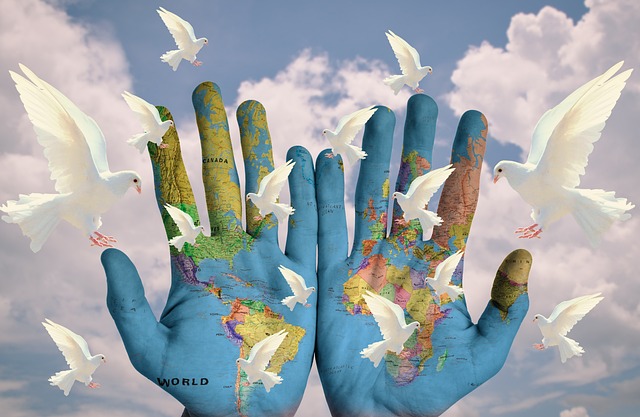April 2, 2023 will be an important date for pacifism.
Thousands of people and associations from different parts of the world have come together to give life, all together, to a day of activities dedicated to promoting peace and raising awareness of nonviolence issues.
A rainbow of different initiatives in distant points of the planet, which will have in common the call for an end to all war (not only in Ukraine) and a change of attitude on the part of governments, to curb the increasingly bellicose trend that is causing a dangerous escalation.
While many European countries are sadly beginning to talk about military mobilization, peoples are beginning to mobilize for peace in order to avert a global conflict that seems to be getting closer every day.
The call originated from the Europe for Peace campaign (which at its inception in 2007 was supported by Noam Chomsky and Gorbachev) and is conceived as an attempt to synchronize the forces of pacifism while maintaining each other’s differences and creativity. An initiative that does not aim to create a new coordination, but only consciousness and convergence.
What forces can pacifists rely on? What tools do they have at their disposal to influence events? This is the real question and the big bet of April 2.
There are many adhesions in Europe, where people will mobilize in various cities: in Madrid, Malaga, Barcelona, Porto, Athens, Brussels, Prague, all the way to Iceland. Pacifists have also responded in large numbers in Italy, organizing events in various cities, including Milan, Bologna, Turin, Ivrea, Florence, Rome and Catanzaro.
It is difficult to estimate the number of events that will take place, since one of the novel features of this initiative is precisely the complete decentralization and convergence on minimal points.
Another important and innovative feature of this initiative lies in its nonviolent dimension. Indeed, an important aspect of April 2 will be the boycott of TV and social media throughout the day.
Gerardo Femina, promoter in 2007 of the Europe for Peace campaign, explains more about the meaning of the initiative:
“Of course, it is important to demonstrate, go to the streets and continue with traditional forms of protest, but there is a need to discover – or rather rediscover – forms of pressure with which ordinary people can really influence governments.
Our rulers seem to be completely disconnected from the opinion of their citizens… By now it is clear that people do not share the lines that governments are advocating. Their policies are leading us to World War III, although people in no way want that. Paradoxically, humanity seems to be hostage to a small elite that is dragging it toward catastrophe.
It is obvious that war does not benefit anyone except that small minority.
Only one possibility remains, and that is for the majority of people to learn to move in sync to the point of paralyzing governments if necessary. During the pandemic, to protect us from the virus, governments quarantined populations. Now we are in the opposite situation: to save themselves from war, populations will have to learn to quarantine their governments.
This is an ironic situation. We will only be able to do this through civil disobedience and boycott. The time has come to start figuring out how to move.”
We will see. And however it goes, this will surely be the first of other similar experiments with a global dimension.






